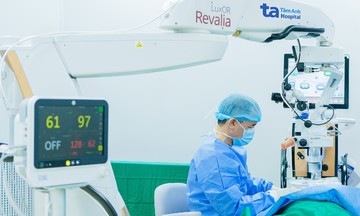According to the World Health Organization (WHO), glaucoma is a leading cause of blindness worldwide. This eye disease damages the optic nerve, often accompanied by increased intraocular pressure. If left untreated, it can lead to blindness. While glaucoma is incurable, early detection and treatment can preserve vision and prevent disease progression. Several strategies can help improve vision and maintain eye health, especially for those at high risk of developing glaucoma.
Regular eye exams are crucial for early detection of eye diseases and protecting vision, according to the US Centers for Disease Control and Prevention (CDC). Eye exams facilitate better disease management and contribute to overall health, thereby preventing the onset of glaucoma. Early detection and treatment of conditions like increased intraocular pressure and optic nerve damage in glaucoma can significantly reduce the risk of blindness. Individuals 40 and older, those with a family history of glaucoma, diabetes, severe nearsightedness or farsightedness, and high blood pressure should have an eye exam every one to two years.
A proper diet can nourish the optic nerves, which play a vital role in maintaining intraocular pressure. Spinach, kale, and collard greens are rich in antioxidants that protect the eyes from oxidative stress. Sources of omega-3 fatty acids, such as salmon, flaxseed, and walnuts, improve blood flow, benefiting eye health. Citrus fruits like oranges, lemons, and grapefruits provide vitamin C, which helps protect eye tissues from damage. Vitamin E, an essential nutrient found in nuts like almonds and sunflower seeds, is beneficial for nerve cells.
Regular physical activity increases blood circulation and helps maintain healthy intraocular pressure. Aerobic exercises can prevent glaucoma. Activities like walking, jogging, swimming, and cycling help regulate blood pressure and improve eye fluid drainage, preventing glaucoma in people with high blood pressure.
Another way to improve overall eye health is through eye exercises. Sit comfortably on a flat surface. Choose a point on the floor about 10 feet away and focus on it. Visualize the number 8 and move your eyes along its shape. Continue for 30 seconds, then switch directions. Repeat 7-10 times.
Eye injuries can cause secondary glaucoma. Preventive measures include wearing appropriate protective eyewear when working with power tools, in chemical environments, or participating in adventurous sports.
Chronic stress and poor sleep can increase intraocular pressure and damage the optic nerve. To prevent glaucoma, manage stress through deep breathing, meditation, or other mindfulness practices. Establish good sleep habits and avoid using electronic devices before bed.
Bao Bao (According to Health Shots)
| Readers can submit questions about eye diseases here for doctors to answer. |












